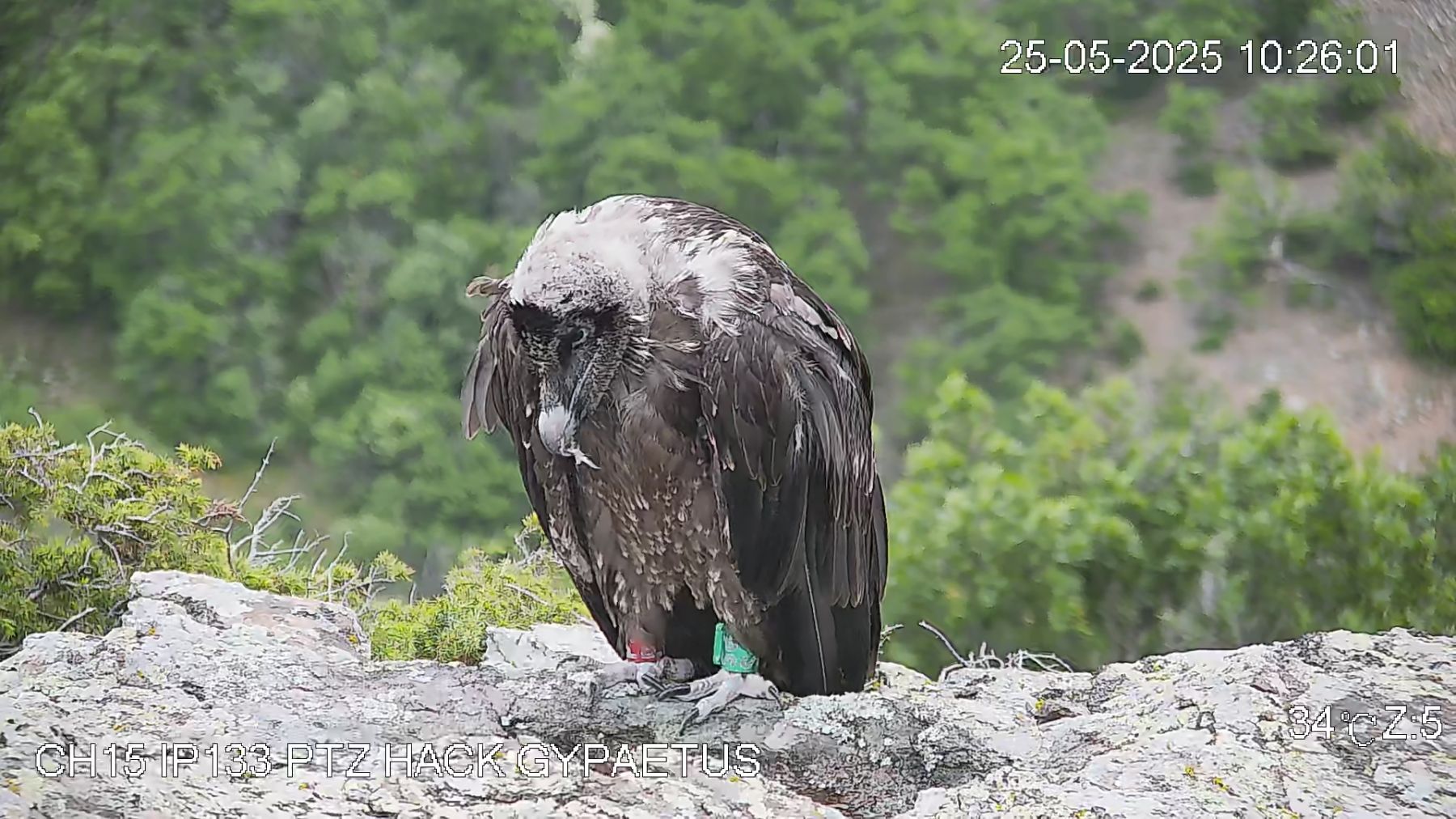100 years after going extinct in the Alps, the bearded vulture is now back to the alpine skies – 40+ established territories and a record number (25!) of wild-born fledged young in 2016, in one of the most celebrated and spectacular wildlife comebacks in recent decades in Europe.
What many do not realise is that at the base of this spectacular result is a dedicated network of organisations, staff, bird curators and volunteers, working in 40+ Zoos, animal parks and specialized breeding centers, working incessantly with a captive stock of birds to maximize captive breeding.
This network, organised in a European Endangered Species Programme (EEP), is coordinated by the VCF. The latest annual report (2016) for all this work is now out – you can download it below.
In 2016, 35 Bearded Vulture pairs laid 59 eggs, from which 29 hatchlings resulted. In the end 27 surviving juveniles were produced. Seventeen of these were released in the 4 on-going reintroduction projects (Alps, Andalusia Grands Causses and Corsica), and 10 were added to the breeding network.
Of these 27 offspring, 18 came from the specialized captive breeding centres (18 laying pairs) and 9 from Zoos (17 laying pairs).
Last year a new founder male from Tallinn zoo successfully reproduced for the first time. Additionally, one new pair in the Green Balkans rescue centre started to reproduce with success.
Despite the high breeding success, the surplus of females inside the EEP has increased because most of the offspring included in the captive network are females due to desired genetic lineage.
Six birds have been transferred between zoos and centers during 2016, making it possible to establish five new pairs. Furthermore, all three pairs from the Asters breeding centre had to be temporarily transferred while the centre is being completely rebuilt.
Four new zoos, Oasi di Sant’ Alessio (Italy), Dvůr Králové Zoo (Czech Republic), Košice Zoo (Slovakia) and Aachener Tierpark Euregiozoo (Germany) have expressed interest to collaborate with the Bearded Vulture EEP.
All this is a result of total dedication of many hundreds of persons. Captive breeding is a full-time job that requires attention 24 hours a day, 7 days a week, and 365 days a year. It is often an unsung, poorly understood component of the whole history – you can see some images of what it is all about in this short film here, shot by Enrico Gombala at the specialized bearded vulture captive breeding center in Haringsee (Austria). This story repeats itself, day in, day out, at all the 40+ EEP zoos and centers.
The VCF would like to thank these, and their staff and volunteers, for this great collaborative work. Without them, the bearded vulture would not be flying high above the alpine peaks, the gorges of the Grands Causses, and the craggy peaks of Cazorla. Thank you very much!
Thank you also to Natasha Peters, who volunteered to review the English text of the report.
Photo: VCF
![]() The Bearded Vulture EEP 2016 annual repo Adobe Acrobat Document 2.2 MB Download
The Bearded Vulture EEP 2016 annual repo Adobe Acrobat Document 2.2 MB Download



